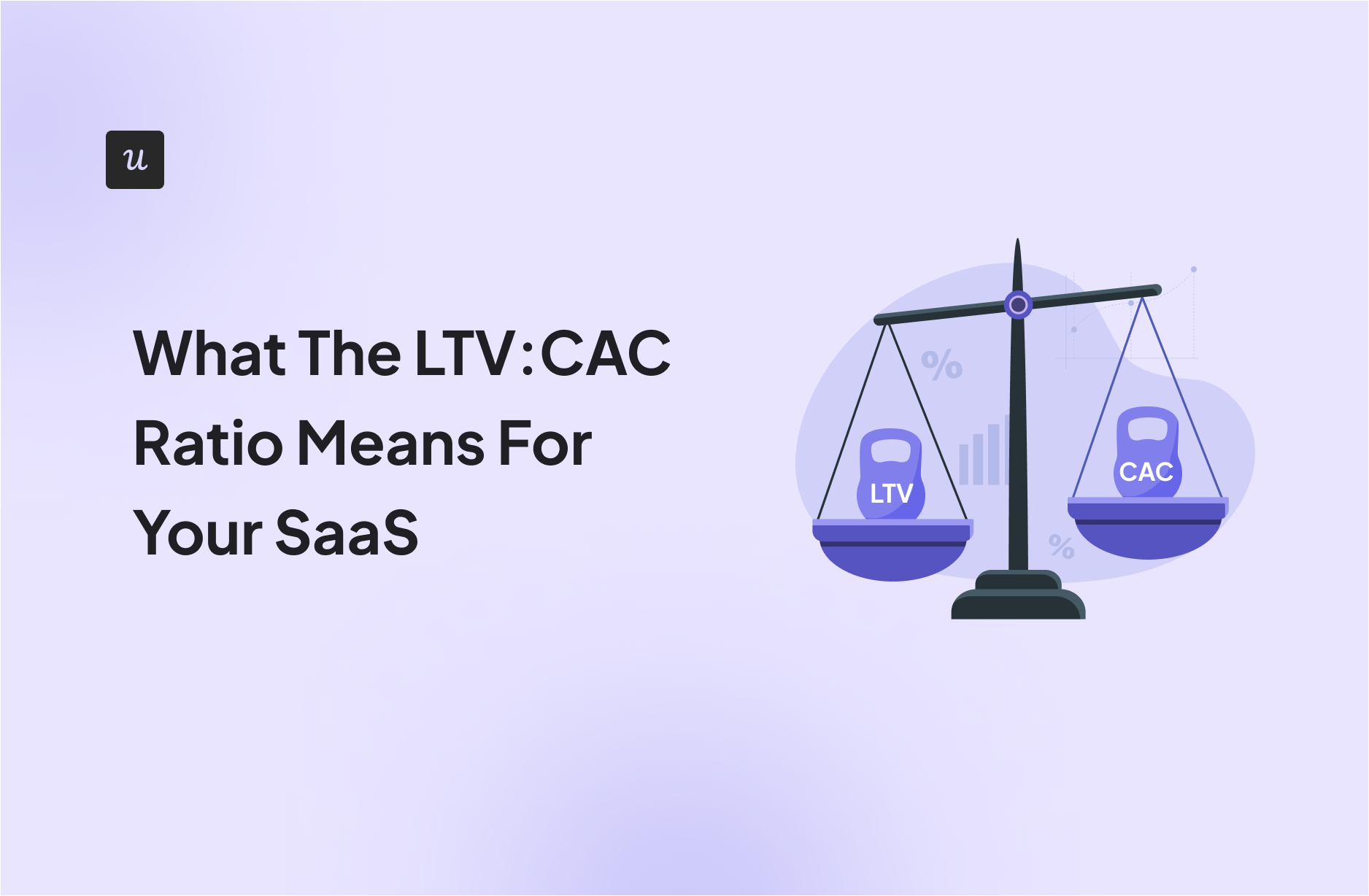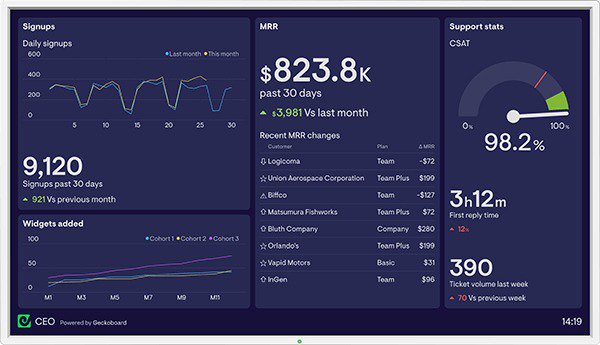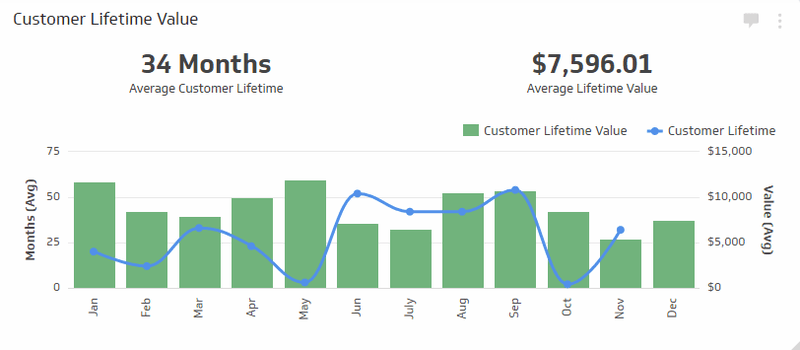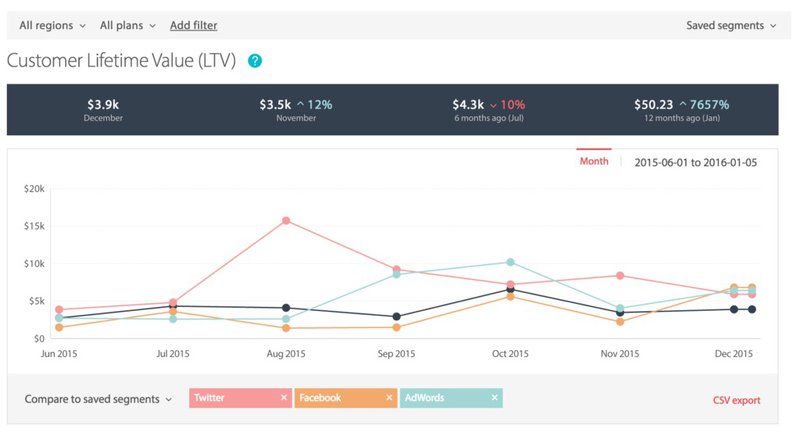
What The LTV:CAC Ratio Means For Your SaaS (& How To Calculate It)
Try Userpilot Now
See Why 1,000+ Teams Choose Userpilot

What is the LTV:CAC Ratio?
The Customer Lifetime Value to Customer Acquisition Cost, or the LTV:CAC ratio, measures how each customer’s lifetime value stacks up against the cost of acquiring that customer. For example, if your LTV:CAC ratio is 2:1, the customer’s lifetime value is twice the amount you spent for acquiring the customer.
Simply put, the LTV: CAC ratio helps you understand customer profitability and how efficiently you are achieving it.
What’s the primary hurdle in optimizing your LTV:CAC ratio?
Understanding your LTV:CAC ratio is the first step to sustainable growth.
What is LTV or Customer Lifetime Value?
Customer Lifetime Value (LTV), also known as CLV, is the total amount of money a customer spends on your business while they’re your customer. Acquiring a new customer costs five times more than retaining an existing one. This makes LTV a key metric to measure, as it shows you how much value you’re gaining from retaining your customers.
How To Calculate LTV
In its most basic form, Customer Lifetime Value (LTV) can be calculated by dividing your revenue by churn rate. For calculating monthly, the formula for calculating LTV is:
LTV($) = Average Revenue Per Account (ARPA)/ Customer Churn Rate
Although this is a pretty basic formula, it can give you a primary estimate of how much value you are getting from your customers. But it ignores the possibility that churn rates tend to fluctuate a lot on a month-to-month basis.
Since customer churn doesn’t occur linearly throughout a customer’s lifetime, adding a discount rate will give you a more conservative estimate of LTV. Hence, we’re multiplying the LTV by 75% to apply a discount to the initial LTV:
LTV($) = (ARPA/ Customer Churn Rate) x 0.75
If you don’t want to use the discounting model, you can use statistical models that use probabilistic approaches to calculate LTV. You can also segment your customers based on varying churn rates and calculate LTV for each segment.
What Is CAC or Customer Acquisition Cost?
Customer Acquisition Cost (CAC) measures how much it costs you to acquire a new customer for your business. It helps you make important decisions such as how much you should spend on your marketing and sales campaigns.
How To Calculate CAC
You can calculate your Customer Acquisition Cost (CAC) by adding up all your sales and marketing costs over a specific period (monthly or yearly) and divide it by the number of new customers you acquired during that period.
So, the formula of Customer Acquisition Cost (CAC) is:
CAC($) = Total Sales and Marketing expenses/Number of acquired customers
What Is The Formula for LTV:CAC Ratio?
Now that you’ve learned how to calculate LTV and CAC, it’s time to combine these two values to find your LTV:CAC ratio. If you have already calculated the values of LTV and CAC, you can simply divide LTV by CAC to find their ratio:
LTV:CAC Ratio = (LTV/CAC)
Or, you can directly calculate it using other metrics:
LTV:CAC Ratio = [(ARPA/ Customer Churn Rate) x 0.75] / [Total Sales and Marketing expenses/Number of acquired customers]
Here’s an example to help you understand how you can use this formula in your business.
Let’s say during 2022, company “X” spends $6,000 on a social media marketing campaign, $8,000 on a Google AdWords campaign, and $6,000 for other sales and marketing-related activities. It gained 1,200 new customers in 2022. The average revenue generated by each customer is $40, and the churn rate was 20%.
LTV:CAC ratio = [(40/0.2) x 0.75] / [(6000+8000+6000)/1200]
LTV:CAC ratio = 150/16.67
LTV:CAC ratio = 9:1
This means the LTV for each customer of company X during 2022 was 9 times its CAC. In other words, it gained 9 times more value than it spent on acquiring new customers.
What is a good LTV:CAC ratio for SaaS? – Benchmarks, KPIs, And Best Practices
There is no magic number to help you identify the perfect LTV:CAC ratio for your business. But according to David Skok, your LTV should be at least 3 times your CAC for running a financially healthy SaaS business.
However, this figure depends on the context of your product and the industry you are operating in. You still need to consider a few things to make sure you are using the correct benchmark to measure your LTV:CAC ratio.
Avoid Getting LTV:CAC Below 1:1
This is a no-brainer. An LTV:CAC ratio of 1:1 means your customer generates the same value you spent acquiring them, leaving a 0 in your profit column. If your LTV:CAC ratio falls below 1:1, then your business is incurring losses and will continue to do so if you stay on that course.
Take Notes If LTV:CAC Gets Too High
But wait, isn’t this whole thing about increasing your LTV:CAC ratio as much as you can? Not really.
Having a huge LTV:CAC ratio like 30:1 can be quite unsustainable for your business. The ratio may indicate that you are not spending as much as you should for acquiring new customers. This can cause your growth to halt at a point and allow your competitors to take leverage of the situation. So, if your customers are giving you lots of value, it’s time you invested in getting more of them, too.
Consider Payback Period Carefully
The concept of a payback period inevitably comes up when you consider LTV and CAC to make certain business decisions. The payback period is the time it takes for your business to recover the acquisition costs from a customer.
Simply put, if a customer churns before the payback period, you incur a loss, and if the opposite happens, you make a profit. According to David Skok, your payback period should be less than 12 months to make your business sustainable.
Shorten Your Sales Cycle
One way to reduce customer acquisition costs and improve your LTV:CAC ratio is by shortening your sales and onboarding cycle. This can lead to faster conversions, which will help you optimize the payback period for your business. You can shorten your sales cycle by quantifying the entire cycle, taking data-driven decisions, and monitoring the entire process closely.
Tools like Userpilot help you create contextual onboarding for your users so that they can get value from your product right away. With Userpilot’s mobile SDK, you can create targeted onboarding flows using slideouts, carousels, and push notifications without writing extra code. Book a demo today, and start creating amazing onboarding experiences for your users!
LTV:CAC Ratio – Importance For SaaS Businesses
Prioritize Your Loyal Customers
Using the LTV:CAC ratio can help your team to identify the customer segments that generate the most value for your SaaS business. This helps you craft better strategies to serve your existing customers as well as acquire new customers who will most likely benefit from your product.
Optimize Your Budget with LTV:CAC
LTV:CAC ratio allows you to allocate your limited funds to the right channels. If you measure the ratio by segmenting your customers based on the channels you used to acquire them, you can get an idea of which of these channels convert the most valuable users. This will help you identify and prioritize the right channels when it comes to distributing your funds.
Attract Investors with the Optimal LTV:CAC ratio
The LTV:CAC ratio is a measure of customer profitability, which is an important metric for investors to consider. It also helps them understand how efficiently your marketing and sales operations are generating results.
A high LTV:CAC ratio, one that is more than 3:1, indicates a possibility of growth and sustainability, which helps you attract investors.
Common Errors In Measuring LTV:CAC
Confusing CAC With CPA
Customer Acquisition Cost (CAC) and Cost Per Acquisition (CPA) are two metrics that are very different and yet often used interchangeably.
While CAC measures your cost to acquire a paying customer, CPA measures the cost to acquire a non-paying customer.
If your marketing campaign generates a sign-up, lead or form submission, you need to use CPA to measure the cost of each action.
A popular example, in this case, is Facebook. Regular users don’t pay to use Facebook; only advertisers do. So, when Facebook gets a new user, the platform measures it using CPA. It only uses CAC when it acquires an advertiser.
It is wise not to calculate the cost of acquiring free trial users using CAC. Free trial users are not guaranteed to convert to paid users. Hence, it’s better to use CPA to measure the cost required to acquire them.
Failing To Consider All Relevant Costs in LTV:CAC Calculation
Another common mistake is to only consider advertising costs while calculating CAC. CAC is calculated by dividing the total sales and marketing expenses by the total number of acquired customers. These sales and marketing expenses include more than just advertising costs.
Your efforts to build your image as a brand also play a factor in attracting new customers. The website you used to convert customers has a development and maintenance cost. The tools and services you use to carry on different marketing and sales activities have a subscription fee.
Moreover, you have to pay salaries to your sales and marketing teams. Make sure you have considered all of these costs while calculating CAC to prevent getting an inflated LTV:CAC ratio, which can lead you to make bad decisions.
Calculating Too Early
Startups often make the mistake of making decisions based on an estimated LTV:CAC ratio. You need to keep in mind that the value of your projection is as good as the data you use to calculate it.
If you are just starting, you likely won’t have enough data to make a realistic projection of LTV and CAC.
So, before you proceed to make decisions based on the LTV:CAC ratio, make sure you have enough data to make it a reliable metric to use.
Using A Uniform LTV
Using a single LTV to calculate your LTV:CAC ratio can give you an overview of the total value your customers are generating. But it can also limit you from gaining valuable insights into user behavior. Perform a demographic or behavioral segmentation of your customers. You can then identify the groups that are likely to generate higher value for your business and adjust your marketing efforts accordingly.
Tools or Software for Tracking LTV:CAC
You can use spreadsheet applications like Microsoft Excel and Google Sheets to calculate your LTV:CAC ratio. But the easiest way to keep track of it is to create dashboards that allow you to gauge your performance in real-time. Tools like Geckoboard, Klipfolio, and ChartMogul allow you to visualize all the metrics related to LTV and CAC over time and help you keep track of the performance of your business.
Geckoboard
Geckoboard is an online dashboard tool that lets you track key metrics such as Monthly Recurring Revenue (MRR), Customer Acquisition Cost (CAC), Average Revenue Per Account (ARPA), and more.
You can customize its dashboards easily using its drag and drop functionality and cycle through multiple dashboards to choose the metrics you need.
Geckoboard allows you to import data from third-party applications like Google Analytics, Salesforce, Trello, SendGrid, Facebook Ads, and more. You can also upload data from spreadsheets created in Microsoft Excel or Google sheets.
Geckoboard’s pricing plan starts from $28/month and comes with a 14-day free trial.

Klipfolio
Klipfolio is a cloud-based tool that creates visualizations to track your data over time. You can easily keep track of your metrics and KPIs in real-time, including Monthly Recurring Revenue (MRR), Customer Lifetime Value (LTV), Customer Acquisition Cost (CAC), Churn Rate, and other relevant metrics at one place.
One of the unique features of Klipfolio is that you can go through example dashboards that help you organize the right metrics according to your need. This makes it very easy to get started on the platform.
Klipfolio allows you to connect to multiple data sources, be it from the cloud, spreadsheets, or on-premise servers. Its pricing plans start from $49/month with a 14-day free trial.

ChartMogul
ChartMogul is a business intelligence platform that offers real-time metrics, data analysis, user segmentation, and easy integration with multiple billing systems. You can keep track of your Monthly Recurring Revenue (MRR), Customer Lifetime Value (LTV), Average Revenue Per Account (ARPA).
To get started with ChartMogul, import your customer records. You also get a range of turnkey integrations along with an option to upload CSV or Excel files. You can use its Import API to get real-time reports by importing your customers’ subscriptions and transaction data.
ChartMogul offers a free plan for less than $10,000 in Monthly Recurring Revenue (MRR). Its paid plan starts from $100 a month, with a free trial available.

Summing Up The LTV:CAC Ratio
While calculating your LTV:CAC ratio, attention to detail will help you get the most realistic estimate. But like many other metrics, there are a few things you need to consider before using LTV:CAC ratio to make decisions.
If you are using contribution margin (the selling price per unit minus the variable cost per unit) to calculate LTV, make sure you have accounted for the fixed costs you have to incur to run your business. Remember to keep your data updated, as metrics like churn rates are highly unlikely to be uniform throughout multiple periods.







